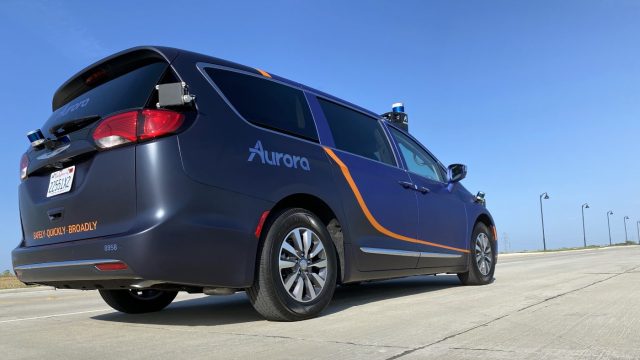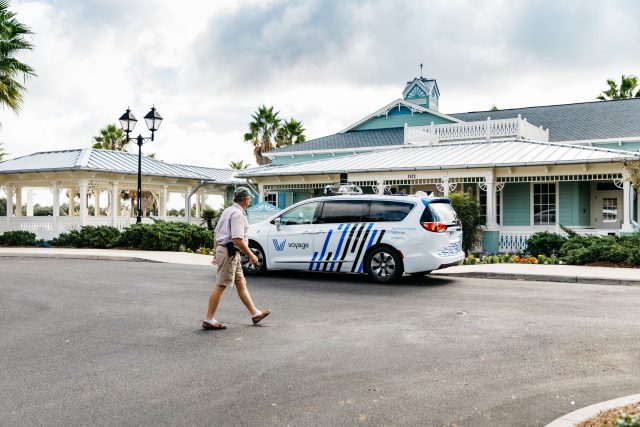Progress on self-driving technology has been slower than many people expected just a few years ago. Google's Waymo was aiming to launch a fully driverless taxi service by the end of 2018 but missed its deadline. GM's Cruise abandoned plans to launch a commercial service in 2019. Tesla has repeatedly fallen short of Elon Musk's optimistic timelines for delivering fully self-driving technology.
This isn't a crisis for these companies. They have plenty of cash and can keep working on the problem as long as they need to. But it is a big challenge for some of their competitors: independent self-driving startups that rely on venture capital to stay afloat. As the timeline for self-driving technology has stretched out, fundraising has gotten more difficult.
"Given the amount of resources required to develop an autonomous vehicle, it never made sense to have dozens of companies doing the same thing," said Sam Abuelsamid, an analyst at Guidehouse Insights. "There was always going to be a shake-out."
Last year a startup called Drive.ai was acquired by Apple days before it would have gone out of business. The self-driving truck startup Starsky announced in March that it was shutting down. Zoox, one of the best-funded self-driving startups, was acquired by Amazon last month for $1.2 billion. It was reportedly close to running out of money and was forced to sell at a fraction of its 2018 valuation of $3.2 billion.
Other self-driving startups have hung on. In recent weeks, I've talked to senior leaders at three self-driving startups—Aurora, Voyage, and May Mobility. Each said their company was in no immediate financial danger and was planning to bring fully self-driving technologies to market. But the reality is that no one knows how long it takes to create a fully driverless, commercially viable service. No one has done it yet. And that means independent self-driving startups are living on borrowed time.
Everyone is operating in Waymo's shadow

Waymo, formerly the Google self-driving car project, has long been considered the industry leader. In early 2018, the company said it would launch a driverless commercial taxi service in Phoenix by the end of the year.
A number of self-driving startups, including Aurora and Zoox, were essentially following in Waymo's footsteps, hoping to capture a share of the market Waymo was trying to create. Zoox's pitch to investors was that it could create a better self-driving experience if it built its own cars in addition to sensors and software. Aurora was co-founded by Chris Urmson, previously the head of Google's self-driving car project. It aimed to develop a self-driving stack it could license to automakers as they scrambled to respond to Waymo's expected commercial launch.
As it turned out, the automakers didn't need to scramble. At its 2018 launch, Waymo's service in suburban Phoenix had safety drivers behind the wheel, wasn't open to the general public, and almost certainly wasn't profitable. Eighteen months later, the program is still limited to a small portion of the Phoenix metro area.
Carmakers breathed a sigh of relief. And that changed the calculus for the rest of the industry.
Aurora seemed to have early momentum as it signed up Volkswagen and Hyundai as strategic partners in January 2018. At the time, Aurora said it was planning to launch mobility-as-a-service—a.k.a. driverless taxi—pilots in partnership with Volkswagen. "As the self-driving system matures, we will integrate this system across Volkswagen Group brands," the company wrote.
Instead, Volkswagen ended its contract with Aurora in June 2019. After Aurora reportedly rebuffed an acquisition offer from Volkswagen, Volkswagen bought half of Ford's majority stake in the self-driving startup Argo.
Neither Volkswagen nor Aurora has gone into detail about why they parted ways. But it's not hard to imagine how Waymo's slow progress could have affected Volkswagen's thinking.
If a car company's leadership thinks Waymo is on the verge of disrupting the industry, they need to come up with a response fast. The best person to turn to might be Chris Urmson, the guy who previously ran Google's self-driving car project. But if Waymo isn't on the verge of disrupting the car industry, then car companies have time to consider other options—options that allow them to retain control of a core strategic asset, like buying a big chunk of Argo.
Meanwhile, Waymo's slow progress made investors more skeptical about the prospects for other self-driving efforts—especially cash-burning startups like Zoox. After raising hundreds of millions of dollars in the last few years, Zoox struggled to raise another round of funding this year. Zoox was ultimately forced to sell at a huge discount to Amazon. Zoox's fundraising failure stands as a warning to other self-driving startups that venture capital funding won't last forever.
Some companies are shifting toward trucking

Another thing the industry has learned from watching Waymo is that driverless taxis are a particularly difficult market to crack. Taxis are mostly used in urban areas, which also tend to be the most complex—and hence most challenging—driving environments. Taxis also have particularly demanding customers. People generally hail a cab because they're in a hurry, so a cautious self-driving taxi that drives slower than a human will struggle to attract customers.
Launching a driverless taxi service is also capital-intensive. A taxi service probably needs to serve an entire metro area to be viable, so setting one up requires a substantial fleet (and therefore a partnership with an automaker) and detailed maps that cover the entire service area. Waymo, with deep pockets and a multi-year head start, still only serves one corner of the Phoenix metro area.
So, in the last couple of years we've seen focus shift away from taxis to other markets. Some companies have concluded that trucking is an ideal first market for self-driving technology. Cargo deliveries aren't as time-sensitive as carrying human passengers, so a self-driving truck can play it safe in early trips. And it may be possible to operate a profitable trucking service that drives just a handful of routes. A driverless trucking company doesn't need to map the nation's highways before it can start generating revenue.
Waymo announced in 2018 that it was testing self-driving trucks in California and Arizona (though it hasn't given up on its Phoenix taxi service). A number of startups focused on trucking have been founded in recent years.
In October, Aurora announced it would focus on trucking—not autonomous taxis—as the first application of its technology. Aurora provided more details about its plans in a Monday blog post. The company is planning to expand its testing in the Dallas area—first with a fleet of Chrysler Pacificas, then later with class 8 trucks.
Other startups are starting small and slow

Waymo emerged from X, Google's moonshot factory. The X philosophy is to solve a difficult technical challenge (the "moonshot") first and worry about commercialization later. In Waymo's case, that means trying to create a general-purpose self-driving system first, and then applying it to applications like taxis or trucking.
Aurora, Cruise, Argo, and Zoox have all pursued variants of this moonshot strategy. Cruise and Zoox have been testing their self-driving cars in San Francisco, one of the most complex and chaotic driving environments in the United States. Aurora, like Waymo, wants to build a flexible self-driving stack that can be used for taxis, trucking, or other applications.
The downside of this strategy is that no one knows how long it will take, how much it will cost, or if these companies are on a path to success at all. Companies might spend billions of dollars before discovering that they bet on the wrong technology or business model. That's a particular problem for a company funded with venture capital.
So other self-driving startups have taken a more incremental approach. They've looked for the least demanding applications of self-driving technology and focused on getting a product to market as quickly as possible.
Voyage, for example, is building a self-driving taxi service for the Villages, a large, privately owned retirement community. May Mobility contracts with local governments to build shared, fixed-route shuttle services. Optimus Ride makes deals with private landlords to carry their tenants around large development projects. Nuro is building delivery robots designed to carry pizza and groceries.
What all of these companies have in common is a top speed of 25 miles per hour. Low speeds greatly simplify the technical challenges of self-driving while also minimizing the risks that their vehicles will cause a fatal accident.
"If your thing fails [at 50 miles per hour] then you need to get to the side of the road and you need to do so autonomously," Voyage CEO Oliver Cameron told me in a recent interview. By contrast, Cameron said, "we can just stop."
None of these companies has launched a fully driverless service (Nuro's robots still have "chase cars" driving behind them), and it's possible they're still years away from doing so. But driving autonomously at 25 miles per hour still seems like a much easier problem than driving at 45 or 65 miles per hour.
And mastering a specific chunk of real estate—a fixed shuttle route for May, a single retirement community for Voyage, or the neighborhood around a particular grocery store for Nuro—is probably easier than mastering an entire metropolitan area. Nuro also benefits from the fact that pizzas don't get frustrated by a slow trip. Its robots can drive more slowly and cautiously than a human delivery driver without unduly irritating customers.
"Voyage's approach of trying to constrain the problem, not trying to solve everything at once, I think will help them in the long run," industry analyst Abuelsamid told Ars.
Small startups are doing more with less

arstechnica
[contfnewc] [contfnewc]







